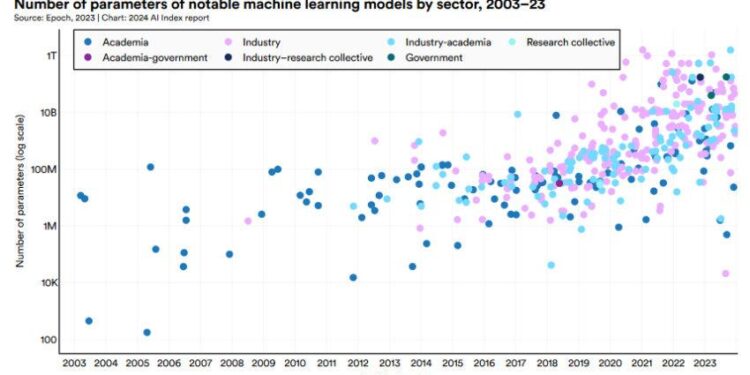In an age where artificial intelligence shapes everything from our daily interactions to global industries, the quality and scope of the data that fuels these systems have become subjects of intense scrutiny. Recently, MIT Technology Review revealed that a major AI training dataset contains millions of examples of personal data, raising fresh questions about privacy, consent, and the ethical boundaries of machine learning. As AI continues to integrate deeper into society, understanding the origins and implications of its underlying data is no longer optional-it is essential. This article delves into the revelations, exploring what this means for the future of AI development and the individuals unknowingly woven into its digital fabric.
The Unseen Personal Data Within AI Training Sets
Hidden beneath layers of aggregated information, AI training datasets often harbor vast reservoirs of unintended personal information. These datasets, assembled from public and semi-public sources, inadvertently trap detailed traces of individuals’ identities, from names and phone numbers to email addresses and even sensitive financial details. While AI developers strive for diversity and scale in their data, the cost of such breadth is the inadvertent exposure of private information, raising urgent questions about consent, privacy, and ethical usage.
Consider the typical contents embedded within such datasets:
- Contact information: phone numbers, home addresses, and emails
- Personal identifiers: full names, date of birth, social security numbers
- Financial data: credit card snippets, bank account references
- Health records: medical conditions or prescriptions visible in text
- Geolocation tags: constant tracking footprints reflected in metadata
| Data Type | Potential Risks | Example |
|---|---|---|
| Emails & Contacts | Spam, phishing attacks | [email protected] |
| Financial Info | Identity theft, fraud | Credit card ending in 1234 |
| Geolocation Data | Tracking, stalking | Coordinates of home address |
Understanding Privacy Risks Embedded in Large Scale AI Models
As AI models continue to grow in size and complexity, the datasets fueling their training have become vast repositories of information-some of which include sensitive, personal data inadvertently captured without explicit consent. These massive collections, while instrumental in enhancing AI capabilities, pose deep privacy challenges that are often overlooked in the quest for performance. The sheer scale means that even a tiny fraction of personal details embedded within could translate into millions of privacy invaders lurking beneath the surface, raising questions about how this data was sourced, anonymized, or protected.
Notably, these risks manifest in several forms:
- Data leakage: AI models may inadvertently memorize and regurgitate private information during interactions.
- Unauthorized exposure: The datasets might contain data from vulnerable populations or sensitive contexts without appropriate safeguards.
- Compliance complications: Navigating regulations like GDPR becomes a challenge when training data origins and contents are opaque.
| Privacy Risk | Potential Impact |
|---|---|
| Unintentional Memorization | Exposure of sensitive info in model outputs |
| Data Provenance Opacity | Difficulty in auditing data sources |
| Regulatory Violations | Fines and legal risks from noncompliance |
| Bias and Ethical Concerns | Disproportionate impacts on certain groups |
Best Practices for Ethical Data Management and Transparent AI Development
Ensuring integrity in AI development starts with responsible data stewardship. Organizations must adopt robust protocols to secure personal information and guarantee that consent is explicit and informed. This extends beyond mere compliance, fostering trust by implementing ongoing audits, anonymization techniques, and clear data usage policies that users can easily access and understand. In practice, this means not only protecting the data but also being transparent about its origin, scope, and handling methods, thus empowering individuals with knowledge about how their information shapes AI systems.
To translate ethical principles into daily operations, teams should embed transparency at every development stage. This includes maintaining detailed records of dataset composition, model training processes, and decision-making criteria. Below is an example framework of key practices that organizations can integrate:
- Data Minimization: Collect only what is necessary for the intended purpose.
- Privacy by Design: Incorporate privacy features from the outset of system development.
- Regular Auditing: Conduct frequent reviews to identify bias and data misuse.
| Practice | Purpose | Benefit |
|---|---|---|
| Data Anonymization | Prevent personal identification | Enhances user privacy |
| Dataset Transparency Reports | Disclose data sources | Builds stakeholder trust |
| Ethical Review Boards | Oversight on data practices | Ensures accountability |
In Summary
As the digital age continues to evolve at a breakneck pace, the revelation that a major AI training dataset harbors millions of pieces of personal data serves as a potent reminder: behind every algorithm lies a web of human stories, identities, and vulnerabilities. Navigating the balance between innovation and privacy demands not only technological rigor but also ethical vigilance. As we build the intelligent systems of tomorrow, it’s imperative to ask-whose data are we using, and at what cost? The answers to these questions will shape not just the future of AI, but the very fabric of trust in our interconnected world.































